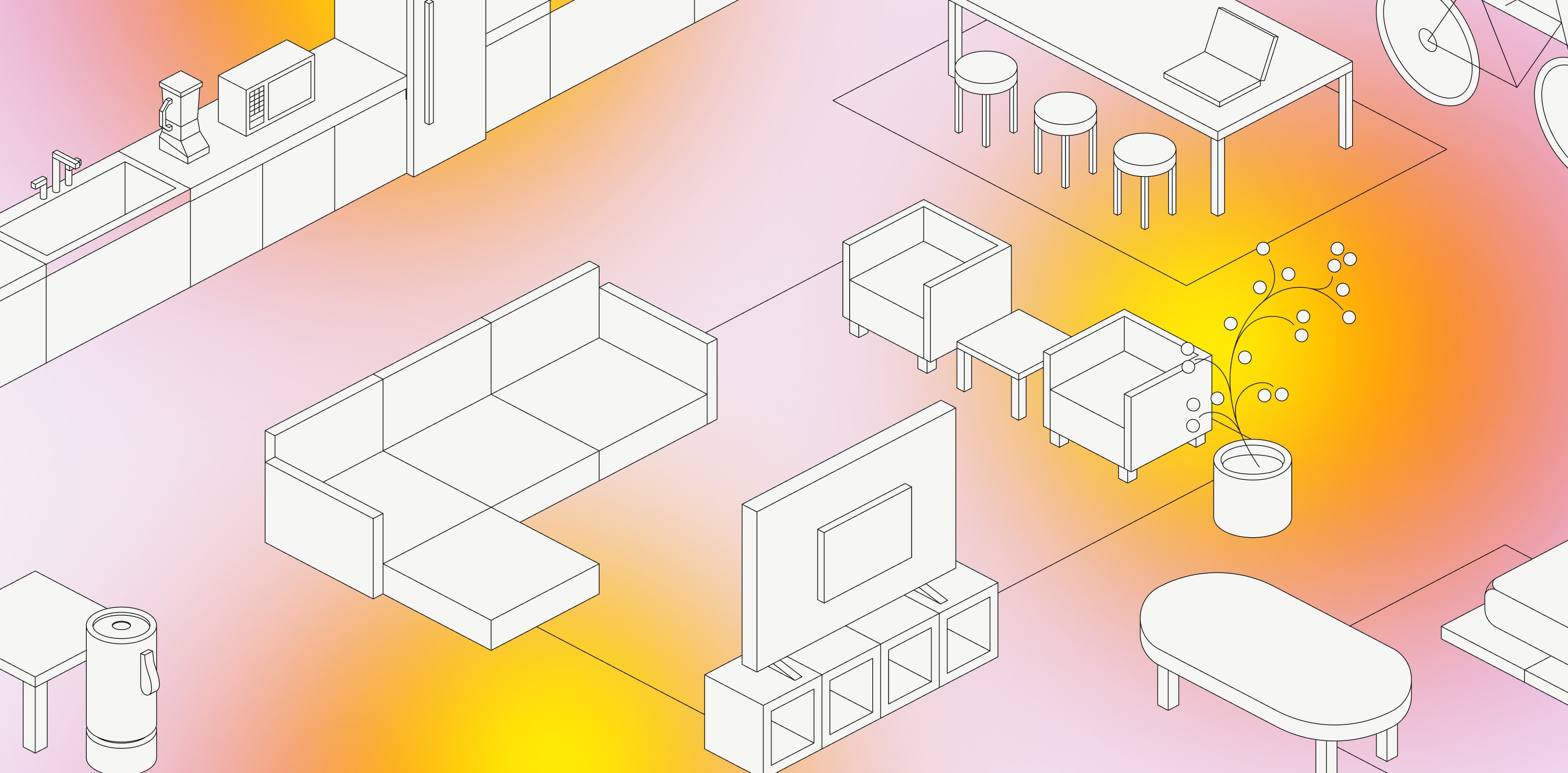When you buy a new dishwasher, smartphone, or TV, the last thing you want to think about is needing to eventually replace that brand-new item. Still, it’s an unfortunate reality that products will eventually malfunction, break, or come to the end of their useful life. That’s where product protection plans come in.
Also known as service plans or extended warranties, product protection plans can cover defects, accidents, or damage to products and even allow consumers to get them replaced or repaired at no additional cost. Product protection plans are most popular for expensive goods like smartphones and laptops . This is partially because they have become so crucial to 21st-century life that it would be difficult to go without your phone or computer while it is being repaired. Of course, not all product protection plans are created equal, and some consumers might wonder if they’re always necessary or just for expensive products like electronics and home appliances.
Clyde compiled a list of 10 important things to know about product protection plans—from what to look for in the fine print to understanding the average cost—to help you decide whether a protection plan can save you money in the long run.
DID YOU KNOW?
Clyde offers a wide range of product warranties that can cover any industry. Popular industries that are covered by Clyde include Consumer Electronics, Jewelry, Furniture, Sporting Equipment, and much more.
Protection plans aren’t one-size-fits-all
Before considering any extended warranty or protection plan, check the manufacturer’s warranty. Federal law requires that customers be able to read the manufacturer’s warranty before making any purchase that costs more than $15. Once you know how long the manufacturer’s warranty lasts and what it covers, you can make sure any product protection plan you’re considering doesn’t duplicate coverage. According to a law adopted by all states, products also come with an implied warranty , meaning the item must function as a reasonable person would assume it should for a reasonable length of time.
For products built to last, long-term protection plans can represent major savings
The longer you expect to own a product, the more it makes sense to invest in long-term protection plans like extended warranties. Take cars, for example. According to Consumer Reports, 95% of car shoppers rank reliability among their top concerns. Extended warranties are particularly popular for cars, as they can give consumers peace of mind that if something unexpected does happen to their vehicle, the cost of repairs will be covered. If your vehicle does end up needing extensive repairs, an extended warranty would reduce your out-of-pocket cost to just the deductible —not the entire bill.
Compare the cost of the protection plans to average repair (or replacement) costs
You’ll also want to compare the cost of your monthly payments to the average repair before buying a protection plan or extended warranty. In order for the plan to be a good investment, the yearly cost should be less than the average repair . For example, let’s say you choose to buy a product protection plan for your smartphone that costs $15 per month. If your phone malfunctions after six months and needs a $500 repair, the plan would have only cost you $60 so far. Product protection plans can also be a sound investment if you have a limited budget and would struggle to come up with several hundred dollars to invest in an urgent repair.
TRENDING
An exceptional customer experience starts with the first purchase. Check out our guide to a merchant dashboard that drives additional revenue each time you sell a product.
Always read the fine print for filing and processing claims
Most manufacturer warranties, product protection plans, and extended warranties come with a lot of fine print. For instance, some extended warranties for cars require you to visit specific shops for repairs or may only pay for a portion of the costs after a certain mileage. Some product protection plans also require you to provide plnety of documentation to file a claim, including the original receipt. Even terms you might think you understand can be defined differently. Some warranties define a product’s lifetime as the amount of time a product is available from that manufacturer, for example.
It’s important to weigh the likelihood of product damage that aligns with the plan
A product protection plan’s fine print will also go into detail on what kinds of issues will be covered. For instance, some plans exclude repairs caused by accidental damage like spilled liquids—so if you’re hoping to insure your new laptop against damage from your toddler’s juice box, you may be out of luck. On the other hand, some phone carriers offer plans that cover theft, loss, and damage. Once you know what kinds of damages or defects would be covered, consider how likely you are to take advantage of that plan.
Keep overall depreciation in mind
Considering how quickly a product depreciates is a key part of deciding whether to invest in a protection plan. If a product is going to rapidly decrease in value, it might make more sense to simply replace it with a newer, more valuable model rather than spending money to repair it down the line. For instance, a new car depreciates 20-30% in the first year . Within five years, most cars lose more than half of their initial value. Electronics also depreciate quickly because so many new products come onto the market constantly. In fact, every new release causes the price of the previous year’s model to drop significantly—sometimes up to 60%.
Protection plans are major drivers of brand loyalty
Many of the consumers who choose to buy product protection plans are those brands’ most loyal customers. One market research study found that customers who bought service plans or extended warranties are more loyal to the retailer than those who didn’t. People who were more familiar with these product protection plans were also more likely to purchase them. Additionally, a separate study found that customers who were very happy about the product they were purchasing were also more likely to opt for an extended warranty. These “hedonic purchases,” as the study’s authors labeled them, were often things like new TVs rather than utilitarian objects like washing machines.
Make sure protection plans for products built to last have similar longevity
Whether you’re dealing with a manufacturer’s warranty or a product protection plan, most provide coverage for a set period of time. Auto warranties usually last for either a certain number of years or until you reach a certain mileage, whichever comes first. Manufacturer warranties on electronics can last anywhere from 60 days to a year, while appliance warranties typically cover repairs for one or two years. If you expect a product to work well for many years, you might want to consider extending your coverage with a product protection plan. Just be sure your expectation of how long the product will last lines up with the manufacturer’s track record.
Confirm whether your credit card already has product protection for purchases
Many credit card companies have come up with their own take on extended warranties. As long as you purchase a product with your credit card and the product manufacturer offers a limited warranty, the credit card company will extend the original warranty for an additional length of time. These extra warranties typically last for an additional year, but they often don’t cover big-ticket items like cars, boats, or computers. American Express, Visa, and Mastercard all offer extended warranty benefits, but each card issuer chooses whether to offer them, so you’ll need to check your specific credit card to see if you have this coverage. To take advantage of credit card-sponsored warranties, you usually need to provide your original receipt, credit card statement showing the purchase, and a copy of the manufacturer’s warranty.
Be mindful of hidden costs like deductibles
While a service plan or extended warranty might seem like a steal upfront, don’t overlook hidden costs that can slip under the radar. Some auto warranties won’t cover repairs unless the vehicle has been serviced regularly, for example. Car parts that need to be replaced due to normal wear and tear also sometimes aren’t covered, meaning you’ll need to account for those costs in addition to the price of the extended warranty. Additionally, some product protection plans include a deductible you have to pay each time you get a product repaired. It’s important to account for these costs when you’re weighing the cost of any service plan or extended warranty to ensure you’re making a wise investment.
Photos courtesy Shutterstock users: Canva and Tinnawat Pechrak
SIGN UP FOR OUR NEWSLETTER




















